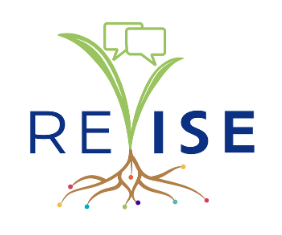April 1st, 2016 - December 31st, 2020 | PROJECT
The Space and Earth Informal STEM Education (SEISE) project, led by the Arizona State University with partners Science Museum of Minnesota, Museum of Science, Boston, and the University of California Berkeley’s Lawrence Hall of Science and Space Sciences Laboratory, is raising the capacity of museums and informal science educators to engage the public in Heliophysics, Earth Science, Planetary Science, and Astrophysics, and their social dimensions through the National Informal STEM Education Network (NISE Net). SEISE will also partner on a network-to-network basis with other existing coalitions and professional associations dedicated to informal and lifelong STEM learning, including the Afterschool Alliance, National Girls Collaborative Project, NASA Museum Alliance, STAR_Net, and members of the Association of Children’s Museums and Association of Science-Technology Centers. The goals for this project include engaging multiple and diverse public audiences in STEM, improving the knowledge and skills of informal educators, and encouraging local partnerships.
In collaboration with the NASA Science Mission Directorate (SMD), SEISE is leveraging NASA subject matter experts (SMEs), SMD assets and data, and existing educational products and online portals to create compelling learning experiences that will be widely use to share the story, science, and adventure of NASA’s scientific explorations of planet Earth, our solar system, and the universe beyond. Collaborative goals include enabling STEM education, improving U.S. scientific literacy, advancing national educational goals, and leveraging science activities through partnerships. Efforts will focus on providing opportunities for learners explore and build skills in the core science and engineering content, skills, and processes related to Earth and space sciences. SEISE is creating hands-on activity toolkits (250-350 toolkits per year over four years), small footprint exhibitions (50 identical copies), and professional development opportunities (including online workshops).
Evaluation for the project will include front-end and formative data to inform the development of products and help with project decision gates, as well as summative data that will allow stakeholders to understand the project’s reach and outcomes.
Project Website(s)
(no project website provided)
Project Products
SEISE Project Page
Video: NISE Network’s Space & Earth Informal STEM Education Project
Explore Science: Earth and Space Activity Toolkit Summative Evaluation
Space Earth and Informal Science Education Project Professional Impacts Summative Evaluation
Team Members
Paul Martin, Principal Investigator, Science Museum of MinnesotaRae Ostman, Co-Principal Investigator, Arizona State University
Catherine McCarthy, Co-Principal Investigator
Larry Bell, Co-Principal Investigator, Museum of Science, Boston
David Rabkin, Co-Principal Investigator
Darrell Porcello, Co-Principal Investigator, University of California, Berkeley
Elizabeth Kollmann, Evaluator
Marjorie Bequette, Evaluator
Ali Jackson, Project Staff
Brad Herring, Project Staff
Funders
Funding Source: NASA
Funding Program: NASA Science Mission Directorate
Award Number: NNX16AC67A
Tags
Audience: Educators | Teachers | Elementary School Children (6-10) | Evaluators | General Public | Learning Researchers | Middle School Children (11-13) | Museum | ISE Professionals | Scientists | Youth | Teen (up to 17)
Discipline: Education and learning science | Geoscience and geography | Nature of science | Physics | Space science
Resource Type: Project Descriptions | Projects
Environment Type: Afterschool Programs | Exhibitions | Media and Technology | Museum and Science Center Exhibits | Museum and Science Center Programs | Professional Development | Conferences | Networks | Professional Development and Workshops | Public Programs | Websites | Mobile Apps | Online Media
